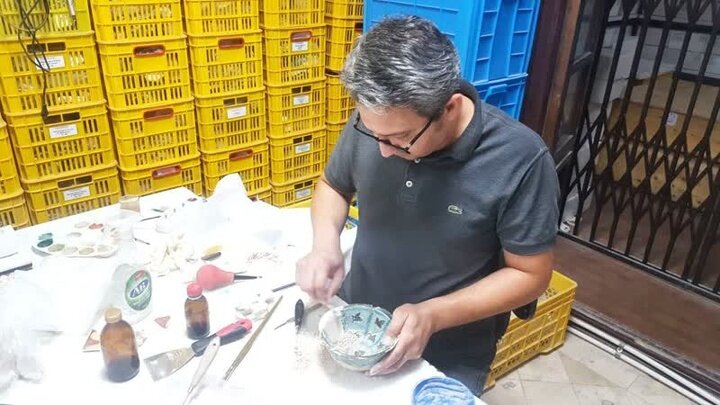12 earthen vessels from Ilkhanid era under restoration

TEHRAN – A selection of 12 Ilkhanid-era pottery vessels is currently undergoing restoration in Zanjan, a local official announced on Tuesday.
These pieces have been unearthed during various archaeological seasons near the UNESCO-listed [Dome of] Soltaniyeh, said Abolfazl Aali, who presides over the World Heritage site.
The official added that the clay objects are being treated in the conservation section of Zolfaghari Mansion, which features the renowned Salt Men and their belongings.
After sediment removal and the restoration of damaged sections, these artifacts will be displayed at the Soltaniyeh Archaeology Museum, Aali said.
He further explained that the ongoing conservation and restoration project includes several stages, such as documentation, damage assessment studies, microscopic morphology studies, technological studies, as well as cleaning (both wet and dry), removal of harmful attachments and labels, undoing past improper restorations through poultice and mechanical methods, injection-based consolidation, mending, reconstructing missing parts, color harmonization, and glaze harmony in the restored sections.
The 14th-century building, which supports the third-largest brick dome in the world, doubles as the Mausoleum of Oljaytu, a grandson of Hulegu, founder of the Il-Khanid dynasty. Oljaytu was a Mongol ruler who, after dabbling in various religions, adopted the Shia name Mohammed Khodabandeh.
Soltanieh’s decoration is so impressive that scholars, including A.U. Pope, described it as ‘anticipating the Taj Mahal’. It is the earliest existing example of the double-shelled dome in Iran.
UNESCO says the Mausoleum of Oljaytu is an essential link and key monument in the development of Islamic architecture in Central and Western Asia. Here, the Ilkhanids further developed ideas that had been advanced during the classical Seljuk phase (11th to early 13th centuries), during which the arts of Iran gained distinction in the Islamic world, thereby setting the stage for the Timurid period (late 14th to 15th centuries), one of the most brilliant periods in Islamic art.
Meaning “Town of the Sultans”, Soltanieh was briefly the capital of Persia’s Ilkhanid dynasty (a branch of the Mongol dynasty) during the 14th century.
AM
Leave a Comment